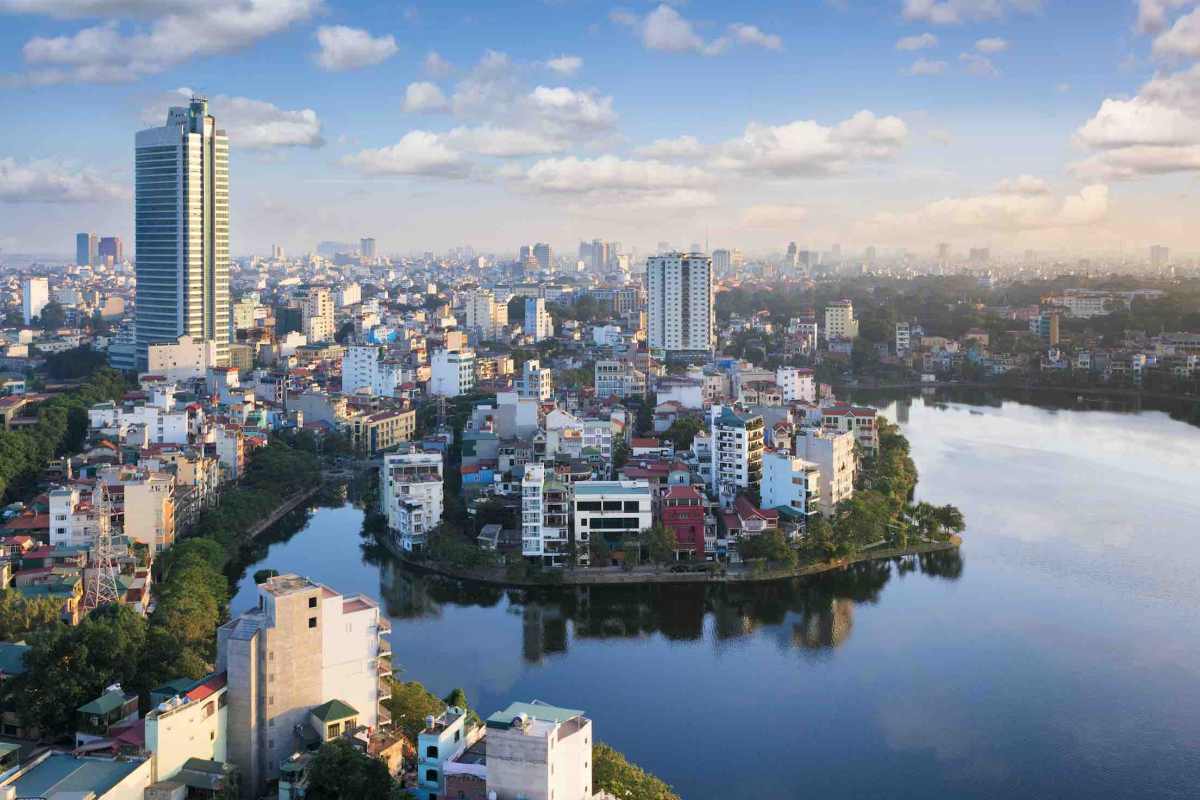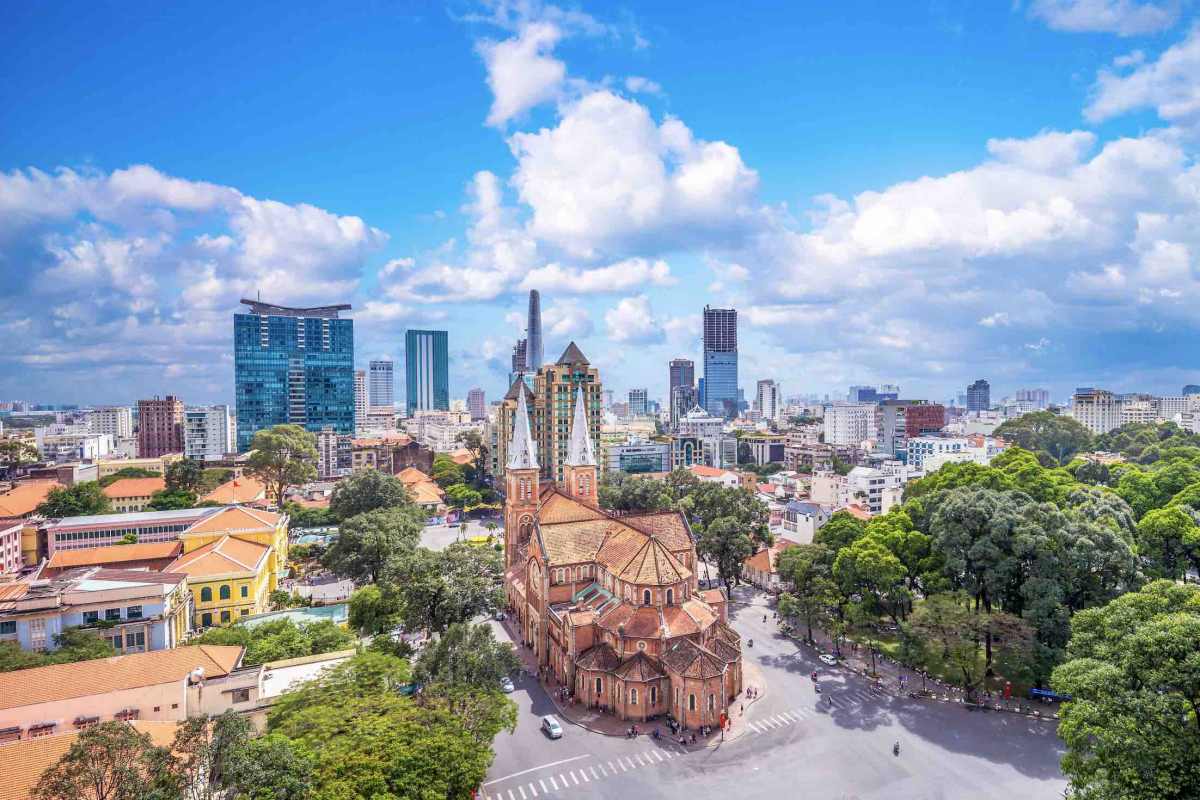Market Research in Vietnam
Vietnam has rapidly emerged as a vibrant economy and an attractive destination for businesses in the past few decades – and market research in Vietnam has consequently become a keyword of utmost significance for international businesses and investors eyeing expansion or investments in the region.
What Is Market Research in Vietnam?
Market research in Vietnam helps companies leverage significant investment opportunities across industries such as manufacturing, retail, and technology. It also assists businesses identify key market trends, consumer preferences, and the competitive landscape. Understanding regional variations, particularly between urban hubs like Ho Chi Minh City and rural provinces, is essential for developing strategies that resonate with local consumers. Additionally, market research provides insights into Vietnam’s growing digital economy, where mobile and internet usage is rapidly increasing, offering new opportunities for businesses to connect with tech-savvy consumers.
The Vital Importance of Conducting Market Research in Vietnam
As Vietnam diversifies its economy, new sectors are gaining prominence. To tap into sectors like fintech, renewable energy, or e-commerce, a detailed understanding through market research in Vietnam is essential. Moreover, with a vast population, Vietnam’s consumer base is diverse. From urban elites in cities like Hanoi and Ho Chi Minh City to the rural populace, preferences and needs vary, necessitating targeted market strategies.
However, engaging in market research in Vietnam offers a multitude of benefits for businesses, providing them with a strategic edge in a market known for its rapid growth and evolving consumer landscape. These benefits are crucial for companies aiming to effectively navigate the Vietnamese market and make informed business decisions. Here’s a closer look at these advantages:
• Understanding Consumer Preferences: Vietnam’s diverse and dynamic consumer base has varying preferences and needs. Market research in Vietnam helps in understanding these preferences, enabling businesses to tailor their products and services accordingly.
• Cultural Insights: Vietnam’s rich cultural heritage significantly influences consumer behavior. Market research in Vietnam offers valuable cultural insights, which are essential for businesses to align their operations and marketing strategies with local norms and values.
• Optimizing Marketing Strategies: Understanding the local market is key to developing effective marketing strategies. Market research in Vietnam guides businesses in creating marketing campaigns that resonate with the Vietnamese audience.
• Customer Satisfaction and Loyalty: By understanding and meeting the needs of Vietnamese consumers, businesses can enhance customer satisfaction and loyalty, which is vital for long-term success in the market.
• Regulatory Compliance: Market research in Vietnam also involves understanding the regulatory environment. It ensures that businesses comply with local laws and regulations, which is crucial for smooth operations.
• Risk Mitigation: Entering a new market like Vietnam, with its unique socio-cultural and economic landscape, involves inherent risks. Market research in Vietnam helps businesses identify potential pitfalls, making it easier to devise strategies that mitigate these risks.
• Competitive Edge: Vietnam’s market is dynamic, with both local and international players vying for a piece of the pie. Comprehensive market research in Vietnam enables businesses to identify gaps in the market, monitor competitors, and position themselves advantageously.
• Optimal Resource Allocation: Understanding the market landscape helps businesses allocate these resources more effectively, ensuring they’re invested in areas with the highest potential returns.
Our Current Market Review and Recommendations

We believe that Vietnam’s rapid economic development, coupled with its expanding middle class, offers significant opportunities across various sectors such as retail, manufacturing, and technology. We recommend businesses focus on understanding the distinct regional differences in consumer behavior, as preferences can vary between urban and rural areas. Tailoring products and services to local needs is key to achieving market success.
We consider Vietnam’s growing digital economy to be a critical area for businesses to explore. With increasing internet penetration and mobile usage, digital platforms provide a major opportunity for reaching Vietnam’s tech-savvy population. Our review suggests that businesses investing in e-commerce, social media marketing, and mobile apps will see significant returns in this digitally driven market.
Finally, we recommend that businesses remain mindful of Vietnam’s regulatory environment and infrastructure developments, which can present both challenges and opportunities. By staying informed and adapting to these factors, companies can navigate the complexities of Vietnam’s market and position themselves for long-term success.
How to Conduct Market Research in Vietnam
Conducting market research in Vietnam effectively requires a strategic blend of qualitative and quantitative methods. These methods provide a comprehensive understanding of the market, consumer behavior, and other critical factors. Here’s how businesses can utilize these research methods in Vietnam:
• Focus Groups: Conducting focus groups with diverse Vietnamese demographics to understand consumer perceptions and attitudes toward products or services ensure cultural sensitivity and language appropriateness in discussions.
• In-Depth Interviews: Interviewing industry experts, long-standing consumers, or local business leaders to gain deep insights into the Vietnamese market is also a very helpful tool to understand the Vietnamese culture and language nuances.
• Case Studies: Analyzing specific business cases or market scenarios within Vietnam for detailed insights and learning experiences is relevant to aligning the business’s objectives with the market’s current situation objectives.
• Surveys and Questionnaires: Distributing structured surveys (online or offline) to respondents to gather measurable data on consumer behaviors, preferences, and demographics ensures clear and relevant data.
Vietnam’s Trends
Vietnam put a plan in place, which was a fundamental part of its rise. They named this plan ‘Why Doi Moi’, and it was a game-changer to Vietnam’s economic stability. In 1986 Why Doi Moi led to an economic transformation. The literal translation of Doi Moi is “restoration.” Vietnam chose that principle as the theme of its rebuilding efforts.
Its focus was on dismantling a planned economy and opening up a closed system to trade. The original focus was on agriculture, as 70 percent of the workforce worked in the agricultural field. At the time, the nation was a significant recipient of food aid. The reforms moved away from collectivization to individual farming for profit. Farmers were free to set their prices and keep any profits. This practice led to a dramatic increase in agricultural production.
Since then, the economy has been moving forward and now presents the following trends:
• Digital and Mobile Growth: There has been a significant increase in digital and mobile usage in Vietnam. This trend affects consumer shopping habits, media consumption, and communication, making online and mobile platforms crucial for business strategies.
• E-Commerce Expansion: E-commerce is rapidly growing, driven by increased internet penetration and a young, tech-savvy population. Businesses are focusing more on online sales channels and digital marketing strategies.
• Rising Middle Class: Vietnam’s economic growth has led to a burgeoning middle class with increasing disposable incomes and changing consumption patterns. This demographic is becoming a key target for a range of products and services.
• Health and Wellness Consciousness: Vietnamese consumers are increasingly aware of and interested in health and wellness. This is influencing trends in food consumption, fitness, and lifestyle choices.
• Sustainable and Eco-friendly Practices: Environmental concerns are leading to a rise in sustainable and eco-friendly products and services. Consumers are increasingly looking for businesses that prioritize sustainability.
• Changing Retail Landscape: The retail landscape is evolving with the integration of digital technologies and the rise of modern retail formats such as convenience stores and shopping malls, alongside traditional markets.
• Urbanization and Infrastructure Development: Rapid urbanization and significant infrastructure development in cities are shaping consumer lifestyles and preferences, impacting a range of sectors from real estate to transportation.
• Cultural and Creative Industries: There’s a growing interest in cultural and creative industries, including fashion, arts, and entertainment, reflecting the younger generation’s desire for cultural expression and consumption.
Key Industries in Vietnam
When one delves into market research in Vietnam, several industries stand out due to their rapid growth, significance to the national economy, and potential for future expansion.
• Manufacturing and Exporting: Vietnam has emerged as a global manufacturing hub, especially in textiles, garments, and electronics. Companies like Samsung have set up extensive operations in the country. The appeal lies in the country’s competitive labor costs, strategic location, and improving infrastructure.
• Information Technology and Software Development: Market research in Vietnam reveals a growing IT sector, driven by a young, tech-savvy population and increased investments in IT infrastructure. Cities like Ho Chi Minh City and Hanoi are becoming regional IT centers, attracting both local startups and international corporations.
• Agriculture: Historically, agriculture has been a cornerstone of Vietnam’s economy. The country is one of the world’s leading exporters of products like coffee, rice, and seafood.
• Tourism and Hospitality: With its rich cultural heritage and scenic beauty, Vietnam is becoming a top tourist destination in Southeast Asia. This has led to substantial growth in the hospitality sector, with numerous hotels, resorts, and other tourism-related businesses springing up.
• Renewable Energy: Market research indicates a significant shift towards renewable energy, particularly wind and solar power. With its favorable climate and government incentives, Vietnam’s renewable energy sector is poised for substantial growth in the coming years.
• Real Estate and Construction: Urbanization, economic growth, and increased foreign direct investment are driving the real estate market in cities like Ho Chi Minh City, Hanoi, and Da Nang. This, in turn, fuels the construction sector, from residential to commercial projects.
… And What Are Its Main Tourist Attractions and Cities?

Vietnam, with its unique blend of ancient traditions, colonial legacies, and modern vibes, offers a plethora of attractions for tourists. Here’s a rundown of some of the most iconic destinations:
• Ha Long Bay: Recognized as a UNESCO World Heritage site, Ha Long Bay is renowned for its emerald waters and thousands of towering limestone islands topped with rainforests. It’s a paradise for adventure enthusiasts.
• Hanoi: The capital city, Hanoi, is a juxtaposition of the ancient and the modern. The Old Quarter, Ho Chi Minh Mausoleum, and the Temple of Literature are among its must-visit spots. The city’s vibrant street markets and tranquil lakes make it a unique destination.
• Hoi An: An ancient town with a rich trading history, Hoi An is known for its well-preserved architecture, reflective of a mix of indigenous and foreign influences. Today, it’s a hub for bespoke tailoring and delectable street food.
• Hue: Once the imperial capital of Vietnam, Hue houses the remnants of the Nguyen Dynasty, including the Imperial City, royal tombs, and ancient pagodas. It stands as a testament to Vietnam’s royal history and architectural prowess.
• Phu Quoc Island: A paradise for beach lovers, this island offers pristine beaches, crystal-clear waters, and vibrant nightlife.
Market Research in Vietnam: Opportunities for Businesses
The importance of market research in Vietnam has significantly amplified over the years, as businesses realize the vast potential this Southeast Asian nation offers. Delving into the opportunities that arise from comprehensive market research in Vietnam:
• E-commerce Proliferation: Vietnam’s e-commerce landscape is booming. Market research presents businesses with insights into the most preferred online platforms, payment methods, and purchasing habits of online shoppers. This knowledge helps businesses strategize their online presence optimally.
• Local Partnership Opportunities: Collaborative initiatives are gaining traction in Vietnam. Through market research in Vietnam, foreign businesses can identify potential local partners who align with their objectives and values, be it for distribution, production, or co-branding.
• Sustainable and Ethical Opportunities: As sustainability gains importance globally, Vietnam is no exception. Comprehensive research can help businesses uncover opportunities to introduce eco-friendly products, sustainable practices, or even CSR initiatives that resonate with the local populace.
• Digital Transformation: The rapid growth in digital and mobile usage offers opportunities in digital marketing, e-commerce, and online services. Companies can leverage this trend to reach a wider audience and offer innovative digital solutions.
• Emerging Middle Class: Vietnam’s expanding middle class represents a significant consumer market. Businesses can tap into this segment with products and services that cater to their rising aspirations and changing lifestyle preferences.
• Health and Wellness Trends: With increasing health consciousness, there are opportunities for health-related products, fitness, wellness services, and healthy food options. Tailoring products to health-conscious consumers can be a lucrative avenue.
• Urbanization and Real Estate Development: Rapid urbanization and infrastructure development create opportunities in real estate, construction, urban planning services, and related industries.
• Food and Beverage Sector: Vietnam’s dynamic food and beverage sector is ripe for innovation in product offerings, with opportunities for fusion cuisines, international food brands, and local culinary experiences.
• Technology and Startups: The burgeoning tech scene and startup culture in Vietnam present opportunities for investment, collaboration, and technological innovation in various sectors.
• Manufacturing and Export: With Vietnam increasingly seen as a manufacturing hub, businesses in manufacturing, export services, and supply chain solutions have opportunities.
Challenges of Market Research in Vietnam for Businesses
Conducting market research in Vietnam presents unique challenges that businesses need to navigate to gain accurate and valuable insights. These challenges stem from Vietnam’s diverse market landscape, cultural nuances, and rapidly changing economic environment – and key challenges include:
• Cultural and Linguistic Diversity: Vietnam’s rich cultural diversity and language variations can pose challenges in conducting market research.
• Digital Divide: While there is significant digital growth in urban areas, rural parts of Vietnam may not have the same level of digital access. This digital divide can impact the reach and effectiveness of online market research methods.
• Regulatory and Bureaucratic Hurdles: Navigating the regulatory landscape in Vietnam can be complex, especially for foreign businesses. Complying with local regulations and understanding bureaucratic processes are important for conducting market research.
• Data Reliability and Quality: Ensuring the reliability and quality of the data collected can be challenging, particularly when dealing with a range of sources and varying standards of data collection.
• Urban-Rural Divide: The disparity between urban and rural areas in Vietnam can lead to varied consumer behaviors and preferences. This divide must be considered when conducting market research to ensure a comprehensive understanding of the market.
• Limited Access to Secondary Research Data: Access to reliable and comprehensive secondary research data can be limited, making it challenging to gather pre-existing market insights.
• Economic Fluctuations: Economic instability and fluctuations can impact consumer spending and market trends. Staying attuned to these economic changes is crucial for timely and relevant market research in Vietnam.
• Cultural Sensitivity and Ethical Considerations: Ensuring that market research practices are culturally sensitive and ethically sound is important, especially when dealing with diverse and sometimes traditional communities.
Future Outlook: Vietnam’s Market Evolution
The trajectory of Vietnam’s market indicates a promising future, and businesses relying on market research in Vietnam will be at the forefront of harnessing this potential. Here’s a snapshot of what the future may hold for the Vietnamese market:
• Economic Growth: The World Bank and other international organizations project that Vietnam’s economy will continue its robust growth. The country’s strategic move towards becoming an export-led economy and its role in various international trade agreements underpin these positive projections.
• Shift from Manufacturing to Services: While manufacturing has been a significant driver of Vietnam’s growth, the service sector, particularly IT and financial services, is gaining traction. This shift provides vast opportunities for businesses in these sectors.
• Green and Sustainable Growth: As concerns about climate change and environmental degradation intensify, Vietnam is pushing towards greener initiatives. This transition will open doors for businesses in renewable energy, sustainable infrastructure, and eco-friendly products and services.
• Investment in Infrastructure: To support its growing economy, Vietnam is investing heavily in its infrastructure, from transport links to power plants. This development means opportunities for businesses in construction, logistics, and related sectors.
• Regional Collaboration: Vietnam’s participation in regional groups such as the Association of Southeast Asian Nations (ASEAN), will further cement its position as a significant player in the region. Such collaborations can lead to more significant trade and business opportunities.
• Innovation and R&D: Vietnam is slowly establishing itself as a hub for innovation, particularly in sectors like tech and biotechnology. The country’s young and tech-savvy population, combined with governmental support, is paving the way for a future centered around research and development.
SWOT Analysis of Market Research in Vietnam
Conducting a SWOT analysis provides a clear overview of the factors influencing market research in Vietnam:
Strengths:
-
- Rapid economic growth and increasing disposable income among Vietnam’s middle class offer opportunities across various industries.
- Expanding digital infrastructure with high mobile and internet penetration, providing businesses with access to a tech-savvy consumer base.
- Strong government support for foreign investment and economic reforms makes it easier for businesses to enter and expand the market.
Weaknesses:
-
- Regional and cultural diversity across the country requires tailored marketing strategies, which can increase operational complexity.
- Underdeveloped infrastructure in rural areas may pose challenges for distribution and market expansion.
- Regulatory processes can be complex, particularly for foreign businesses unfamiliar with Vietnam’s legal framework.
Opportunities:
-
- Vietnam’s young and growing population presents significant opportunities in sectors such as e-commerce, technology, and consumer goods.
- Emerging interest in sustainable and eco-friendly products, providing businesses with opportunities to cater to environmentally conscious consumers.
- Government initiatives focused on improving infrastructure and encouraging foreign investment open new avenues for market growth.
Threats:
-
- Intense competition from both local businesses and international companies, making it difficult for new entrants to establish a foothold.
- Economic fluctuations or external market pressures could impact consumer spending and business operations.
- Rapid technological advancements may require businesses to continuously adapt to stay competitive in the digital space.
How SIS International’s Market Research in Vietnam Helps Businesses
SIS International offers comprehensive market research in Vietnam, providing businesses with the insights and strategies they need to succeed in this dynamic market. Here’s how our market research in Vietnam can benefit your business:
- Detailed Consumer Insights: We help businesses understand the preferences, behaviors, and trends of Vietnam’s diverse consumer base, allowing for more targeted marketing and product development.
- Regional Market Analysis: Our research delves into the specific characteristics of Vietnam’s various regions, helping businesses tailor their strategies to local markets.
- Digital and E-commerce Insights: We provide detailed analysis of Vietnam’s growing digital economy, enabling businesses to capitalize on opportunities in the e-commerce and mobile sectors.
- Competitive Benchmarking: Our market research helps businesses evaluate their competition, identify key areas for differentiation, and find ways to stand out in the market.
- Tailored Market Entry Strategies: We guide companies through Vietnam’s regulatory environment and infrastructure challenges, ensuring a smooth and successful market entry.
- Risk Mitigation: We identify potential risks and challenges in the Vietnamese market, helping businesses prepare and adjust their strategies accordingly.
- Local Business Partnerships: Our insights help businesses identify and build valuable local partnerships, enhancing collaboration and improving market access.
About Market Research in Vietnam
SIS International offers Quantitative, Qualitative, and Strategy Research. We provide data, tools, strategies, reports, and insights for decision-making. We also conduct interviews, surveys, focus groups, and other Market Research methods and approaches. Contact us for your next Market Research project.



